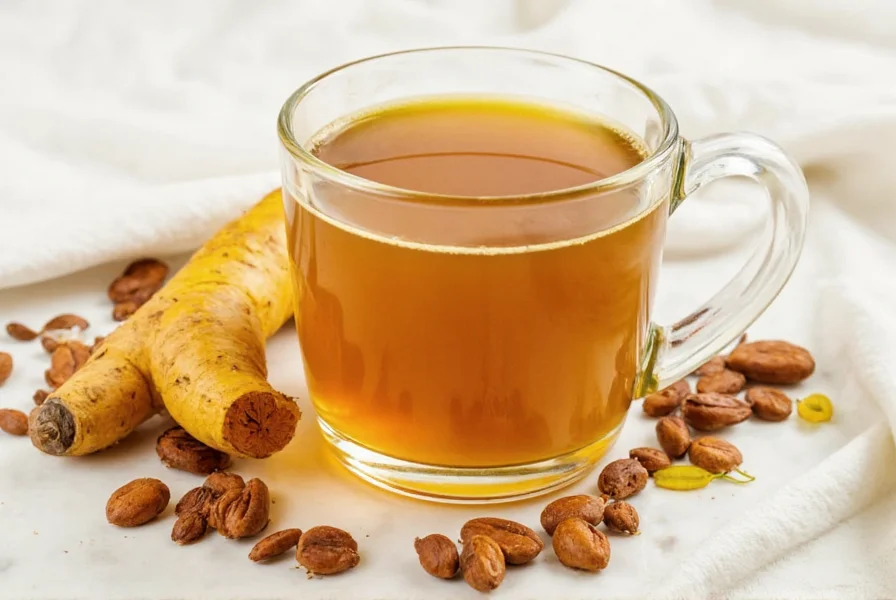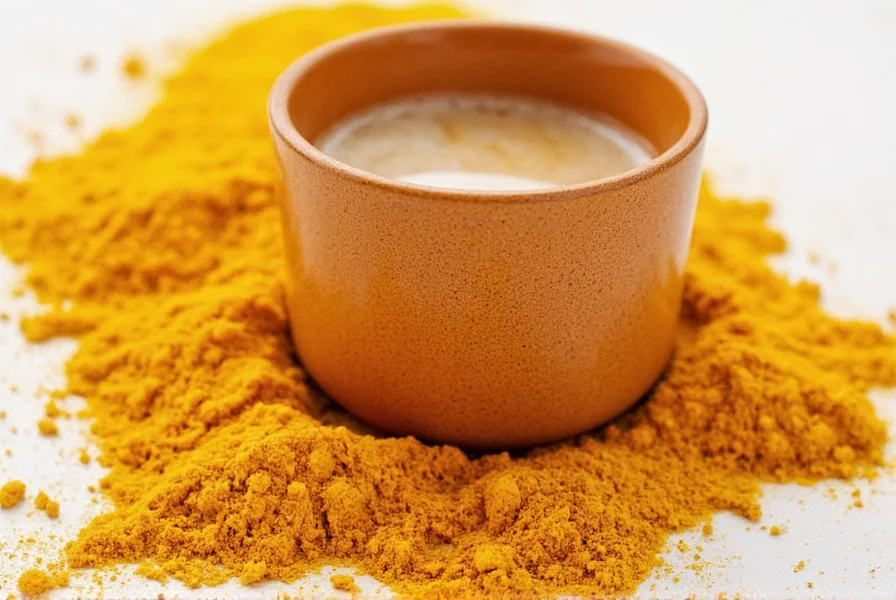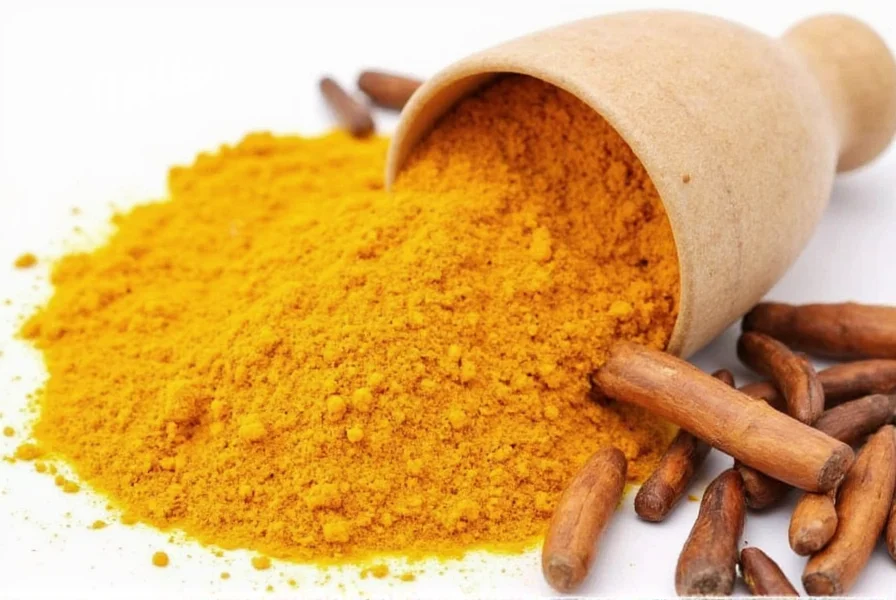Golden coffee, the practice of adding turmeric to your morning brew, has surged in popularity as part of the functional beverage movement. This simple modification transforms ordinary coffee into a potential wellness elixir with centuries of traditional use behind it. The combination leverages coffee's antioxidant properties with turmeric's active compound curcumin, creating a synergistic effect that may support overall health. However, understanding the proper preparation methods and realistic expectations is crucial for maximizing potential benefits while avoiding common pitfalls.
The Science Behind Turmeric's Active Compound
Curcumin, turmeric's primary bioactive component, constitutes about 2-8% of the spice and demonstrates significant anti-inflammatory and antioxidant properties. Research published in Advances in Experimental Medicine and Biology indicates curcumin can inhibit multiple molecules involved in inflammation, potentially benefiting conditions like arthritis and metabolic syndrome. However, curcumin's notoriously poor bioavailability presents a challenge—its absorption rate without enhancement is estimated at less than 1%.
The addition of black pepper, specifically its piperine content, increases curcumin absorption by up to 2,000% according to a Planta Medica study. This scientific insight explains why traditional preparations like golden milk and turmeric coffee recipes almost always include black pepper. Understanding this bioavailability issue is essential when evaluating the health benefits of turmeric in coffee—without proper preparation, most of the potential benefits remain unrealized.
Why Combine Turmeric with Coffee Specifically?
Coffee provides an ideal vehicle for turmeric consumption for several reasons. First, coffee's natural acidity helps stabilize curcumin, potentially improving its effectiveness. Second, both coffee and turmeric contain compounds that may work synergistically—coffee's chlorogenic acids and turmeric's curcuminoids both demonstrate antioxidant properties through different mechanisms.
The warm liquid base of coffee also enhances turmeric's solubility compared to cold beverages. Additionally, many people already consume coffee daily, making it a practical delivery method for consistent turmeric intake. This addresses the how to add turmeric to coffee properly question by leveraging existing habits rather than requiring new behavioral changes.
| Ingredient | Amount Per Cup | Purpose |
|---|---|---|
| Freshly brewed coffee | 8-12 oz | Base liquid with natural acidity |
| Turmeric powder | 1/4-1/2 tsp | Source of curcumin |
| Black pepper | 1/8 tsp | Enhances curcumin absorption |
| Healthy fat | 1 tsp (coconut oil, ghee) | Improves curcumin solubility |
Optimal Preparation Methods for Maximum Benefits
The best way to prepare turmeric coffee involves specific techniques that maximize curcumin's bioavailability. Start with freshly brewed coffee rather than instant, as the brewing process creates the ideal temperature and pH environment. Add turmeric while the coffee is still hot (160-180°F) to improve solubility, then immediately follow with black pepper and a healthy fat source.
Many enthusiasts make the mistake of adding turmeric directly to coffee grounds before brewing, which significantly reduces effectiveness as the high heat of brewing degrades curcumin. Instead, whisk turmeric into the finished brew using a small frother or vigorous stirring. For those wondering does turmeric in coffee really work, consistent proper preparation over weeks or months yields better results than occasional use, as curcumin's effects are cumulative.

Evidence-Based Health Considerations
While the turmeric coffee anti-inflammatory effects show promise in preliminary research, it's crucial to maintain realistic expectations. A systematic review in Nutrients journal noted that most human studies use concentrated curcumin supplements (typically 500-2,000mg daily) rather than culinary amounts found in turmeric coffee. The typical 1/4-1/2 teaspoon of turmeric in coffee provides approximately 200-400mg of curcumin, substantially less than clinical study doses.
That said, regular consumption as part of an anti-inflammatory diet may contribute to overall wellness. Research suggests potential benefits for joint health, with one Journal of Medicinal Food study reporting reduced osteoarthritis symptoms with daily curcumin intake. However, turmeric coffee shouldn't replace medical treatment for chronic inflammatory conditions.
Potential Side Effects and Safety Considerations
Understanding the potential side effects of turmeric coffee is essential for safe consumption. While generally safe in culinary amounts, excessive turmeric intake (more than 1 teaspoon daily) may cause gastrointestinal discomfort in sensitive individuals. Turmeric also contains oxalates, which could potentially contribute to kidney stone formation in susceptible people.
More significantly, turmeric may interact with certain medications, particularly blood thinners like warfarin, as it has mild anticoagulant properties. Those with gallbladder issues should consult a healthcare provider before regular consumption, as turmeric may stimulate bile production. Pregnant women should limit intake to culinary amounts, as high doses haven't been adequately studied for safety during pregnancy.

Creating Your Perfect Turmeric Coffee Recipe
Developing a personalized turmeric coffee recipe with black pepper involves balancing flavor preferences with health considerations. Start with a basic ratio of 1/4 teaspoon turmeric, a pinch of black pepper, and 1 teaspoon coconut oil per 8-ounce cup. Gradually adjust based on your taste preferences and tolerance.
For improved flavor integration, consider these enhancements:
- Add 1/2 teaspoon cinnamon for complementary flavor and additional anti-inflammatory benefits
- Include a small piece of fresh ginger for digestive support
- Use MCT oil instead of coconut oil for more neutral flavor
- Add a dash of vanilla extract to mask any earthiness
Remember that consistency matters more than perfection—regular daily consumption of a reasonably prepared turmeric coffee provides more benefit than occasional perfectly prepared versions. The key is finding a preparation method you enjoy enough to maintain long-term.











 浙公网安备
33010002000092号
浙公网安备
33010002000092号 浙B2-20120091-4
浙B2-20120091-4